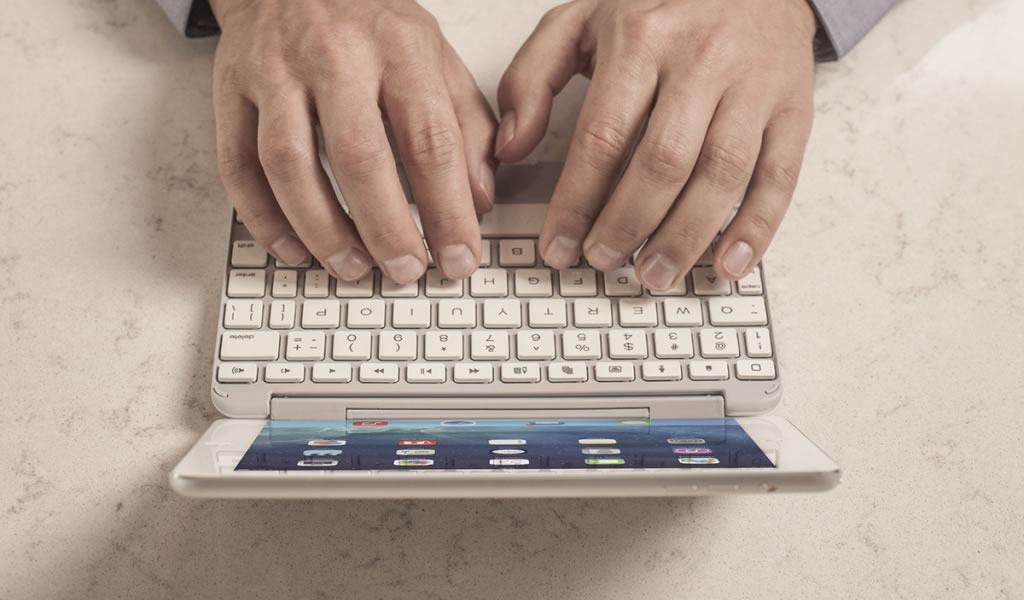The common refrain has been that tablets are for consumption and that laptops are for productivity, and never the twain shall meet. Because of refrigerators and toasters, or something like that. Microsoft tried to bridge that gap with Windows 8 and the Surface, but its efforts have been mostly met with general scorn.
Jeffrey Yuwono is CEO and co-founder of Feecha, a hyperlocal news app for neighbourhoods. A Stanford MBA and Duke undergrad, Jeff writes insightful observations about technology once a day on his blog The Cornerplay and now on this weekly column on TechSpot.
But it's a different world today. Tablet sales have flatlined in developed markets, smaller tablets are less desirable in light of phablets, PC sales have stabilized and people want to do work on large screens.
And now Apple and Google want to cross that bridge, too, into Microsoft territory. Apple with the iPad Pro, and Google with the new Nexus.
Tablet Sales
Tablet sales are cooling off -- tablets of yesterday are "good enough" for many users and there seems to be little incentive for consumers who already own one to purchase another, short of the tablet breaking.
Now we have IDC chiming in. The market data firm expects tablet growth in mature markets like the US to be flat; conversely, it expects PCs to grow 5.6% on the same markets. As we reported earlier this week:
Mature markets like North America and Europe are expected to combine for flat growth in 2014. The average selling price of tablets in these markets is expected to stabilize at $373 this year thanks in part to the ongoing shift to larger screens and cellular capabilities.
"As you move up in screen size, you move towards productivity. The keyboard is becoming more important," [Jean Philippe Bouchard, research director for tablets] said.
Rival research company NPD forecasts that larger tablets are poised to grow and will take market share from smaller tablets – from 2% share this year up to 12% by 2018.

Buyers are realizing that if they purchase a new device with a large display size, they should be able to do work with it. That, coupled with a plethora of cheap Windows PCs entering the market, means that laptops are more attractive than ever.
For larger versions of iPad and Android tablets to compete, Apple and Google will need to strengthen their tablets' productivity capabilities.
iPad Pro
iPad sales have dropped two straight quarters... not growth, absolute sales. Apple plans to reverse that trend by putting more emphasis on selling iPads to businesses, as shown in Apple's recent partnership with IBM.
According to IDC, this might be the right move; tablets sold to businesses are expected to grow and take share from tablets sold to consumers.

In Apple's quarterly conference call with Wall Street, Tim Cook said:
Our theory that has been there, honestly, since the first time that we shipped iPad, that the tablet market would eventually surpass the PC market. That theory is still intact. I just think we have to do some more things to get the business side of it moving in a faster trajectory and I think we're now onto something that can really do that.
We've heard rumblings about a bigger screen iPad Pro for a while now. Previously, those rumors pointed to a 12-inch display size, but the latest suggest 12.9-inches and a Spring 2015 launch.
At 12.9-inches and a 3:2 ratio, the iPad Pro will be even larger than a Surface Pro 3, a device aimed squarely at workers who also want to use their device for play.
At that display size, a split screen function -- critical for office work – that's coming for iOS 8 would make a lot of sense.
Nexus Keyboard
A key component of Microsoft's Surface strategy is the Type Cover. Taken together, they can be used like a laptop to do tasks that requires extensive typing.
While it's not better than a laptop at doing laptop-type tasks, for those who require something that's just capable enough for both consumption (tablet) and productivity (laptop) in one thin-and-light form factor, the Surface concept works well.
It looks like Google will follow. Google and HTC are developing a thin keyboard case/cover for the yet unannounced, 9-inch Nexus tablet. The new Nexus will have a 4:3 ratio, which is a departure from Nexus' traditional 16:9 ratio; the former is common for laptops, the latter is optimized for movies. The change signals Google's intention for the device to be more focused on productivity.
When the new Nexus is not in use, it rests on top of the keyboard, as diagrammed below:

The case would be a native accessory using Bluetooth 4.0 and an NFC chip to make connectivity easy. If rumors hold true, the new Nexus would be similar to the Surface, a device that can do both consumption and productivity.
Unfortunately, I think they made the wrong decision to go with a 9-inch display, as I personally find even the Surface 2's 10.5-inch display too small. Maybe Google and HTC will surprise us with a 12-inch version.

The race is on to see who can create the superior converged device: Will Google and Apple move quickly enough to add productivity capabilities to their tablets? Or will Microsoft get enough developer support to make consumption respectable for Windows slates?
I'm not saying there won't be a market for premium laptops like the MacBook Air or the Asus Zenbook. However, when it comes to the masses, it's about that one low cost, large display, computing device for the household. A device capable of both work and play.
